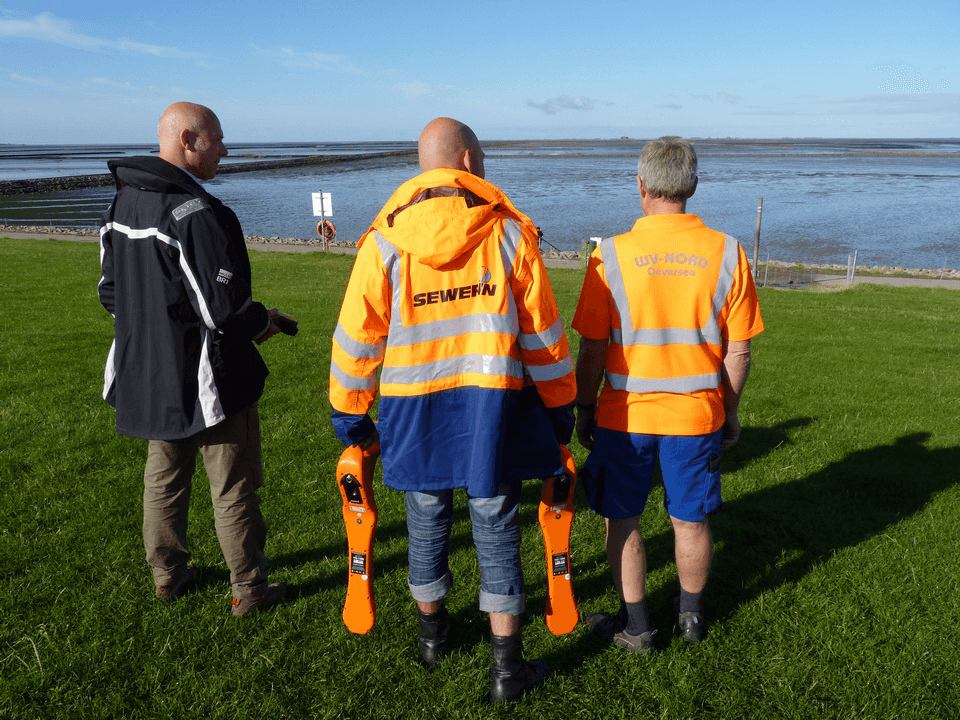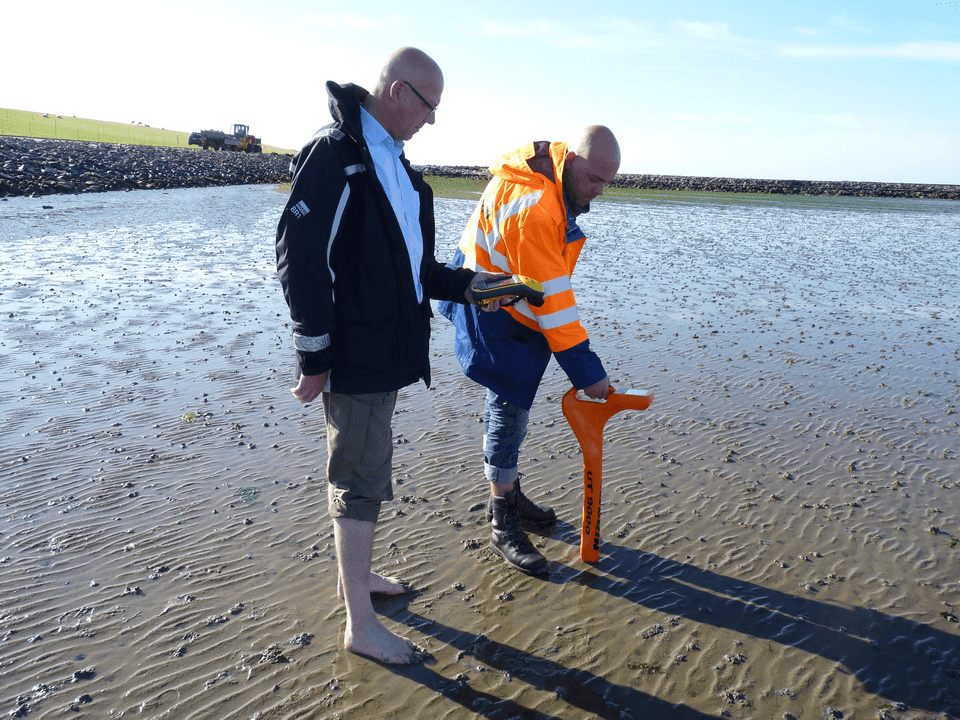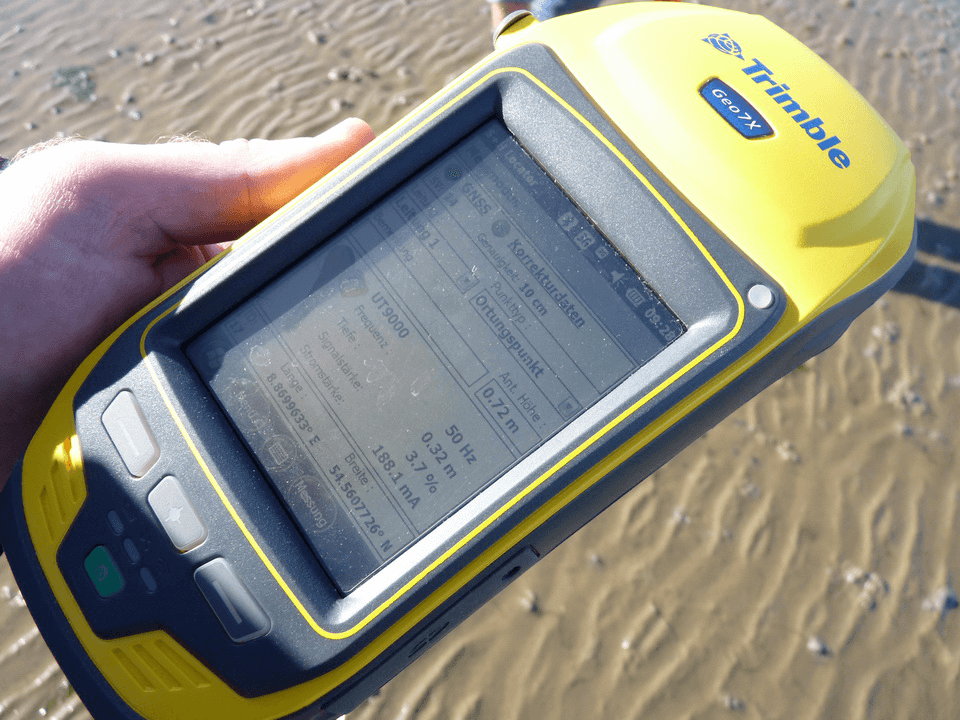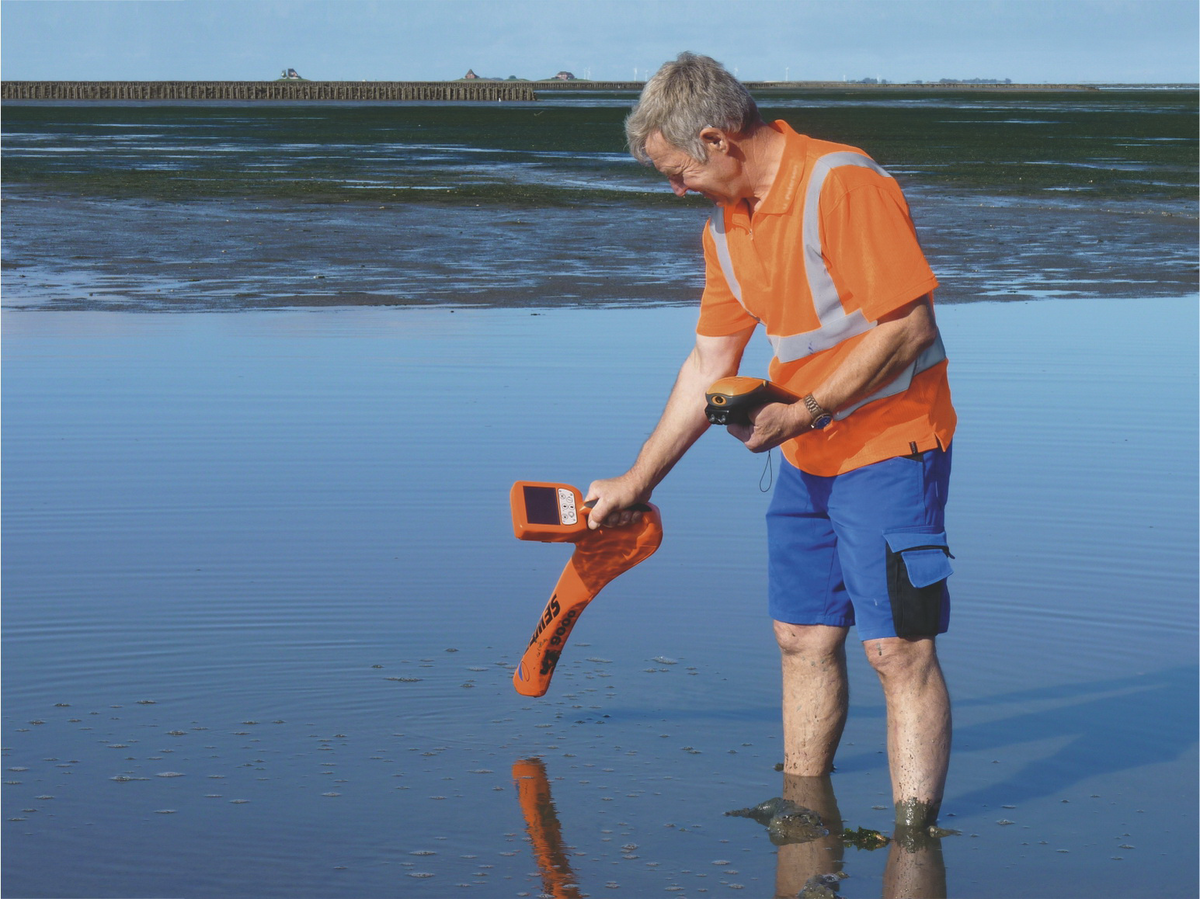Mudflats - complex beauty
The Wadden Sea in the North Sea with its coastal regions in Denmark, the Netherlands and Germany is the largest system of mudflats in the world. It is the natural habitat for many species and seawater-resistant plants, making it one of the most fascinating landscapes in Europe. It is, however, also one of the most unpredictable. The tide comes in over the mudflats twice a day and is only safe to walk on for a maximum of six hours when the tide goes out. In the event of fog or bad timing, the incoming tide can put walkers' lives at risk. The small offshore islands, the Halligen, can find themselves under water during storm tides. And despite all this, the inhabitants of the North Sea coast love "their" Wadden Sea and build their lives around the difficult conditions.
Supplying power and drinking water to the islands has been a problem ever since they were inhabited. The Halligen in particular lie just a couple of metres above sea level. The marsh soil does not retain any freshwater, which meant that rainwater had to be collected in reservoirs. If supplies ran out in times of drought or the drinking water became salty from storm tides, freshwater was transported from the mainland by ship, plane or helicopter. But even that was impossible during storms or hard winters. A solution for an all-weather water supply was therefore needed.
In the 1960s the first pipes were laid through the Wadden Sea to connect the Halligen and the island of Pellworm to one of the main water supply networks on the mainland.
The Wasserverband Nord utility company continues to supply freshwater to the islands in this way. The pipes are jetted into the bed of the Wadden Sea. This is a highly technical operation, usually carried out by ships. Above-ground pipes would be extremely susceptible to damage from shipping, temperature fluctuations and pronounced slopes in the seabed. The pipes, which are plunged by ships, cannot be laid in a straight line because of the swell. A nightmare for any cartographer.
How can a freshwater pipe between the mainland and Pellworm be accurately located and documented in these conditions? Wasserverband Nord asked Sewerin to help it find the answer.
It's all plain sailing on the mud flats. And this is where our story begins:
André Bischof, Product Manager at Sewerin, swears by his many years of experience using the best running and mountain biking gear. But right now gooey mud is seeping through his pores and sticking to his shoes. Step by step he battles on. "Hi!" comes a cheerful voice from behind, and the Wasserverband Nord worker smiles at the sole hanging off André's shoe as he plods through the mudflats. He did warn him. The mudflats are something else.
The same goes for the task: Wasserverband Nord, with the help of Sewerin, would like to accurately locate and document a freshwater pipe between the mainland and Pellworm using a cable running parallel to the pipe.
One chance to get it right
Locating pipes in the mudflats means working in the most challenging conditions, both for man and equipment - and not just footwear. In this narrow window set by high and low tide, no one has time to read detailed instructions for equipment. The nearest mains socket is miles away; that means that a long battery life and a strong transmitter with excellent range are required. The material will have to withstand seawater, mud and rain and the long distances to be covered can mean an arduous journey when carrying equipment. The location process needs to be quick, efficient and results-oriented.
One chance to get it right - further attempts will cost time and money. And no one wants that.
Effective, fast and successful - is that even possible in the mudflats?
The conditions for a successful day in the mudflats are ideal: good weather, experienced staff from Wasserverband Nord with local knowledge go with us onto the mudflats. Sewerin has provided cutting-edge technology in the form of the UT 9000 which is supported by an external GPS system, the GeoExplorer by S+H Systemtechnik GmbH. After a brief calibration, the two systems are communicating complementing each other perfectly. Following a short explanation of how the device works, one of the WV Nord workers makes his way onto the mudflats to locate the pipe. We go too.
Plain sailing on the mudflats
He finds the device easy and effective to use. The self-explanatory menu navigation guides him to the position of the pipe one step at a time. Their light weight and superior ergonomics make the devices easier to transport through the sticky mud. The bright sunshine is both a blessing and a curse. The sun is nice and warm, but while the digital camera used for the documentation has to be switched to the manual viewfinder, the high-contrast LC display of the UT 9000 is clearly legible, even in these extreme lighting conditions. The further we move away from the mainland onto the mudflats, the greater the distance from the transmitter; nevertheless the display is clear and accurate and hardly any changes of direction are required. We make good progress.
Or perhaps not?
Even the most experienced mudflat walkers get stuck in the mud sometimes and the UT 9000 ends up in the seawater. After a brief moment of panic, the all-clear signal. Thanks to its sturdy and waterproof housing, the device is unscathed and immediately ready to go again. But then the next tideway becomes impassable due to high water. As the UT 9000 boasts the "offset depth" feature, it has no bother recording the pipe's position and depth even here. The depth is simply measured a few metres further out from the passable mudflat floor. We get all the information we need without wasting precious time.
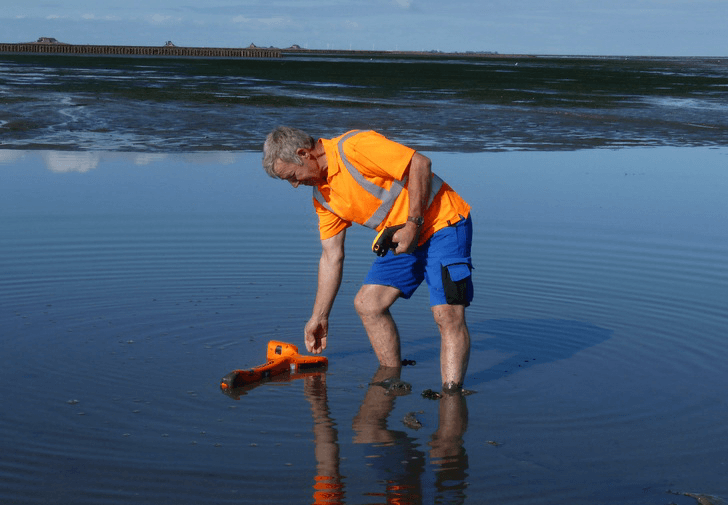
That was easy after all!
"That was easy!" Our man on the mudflats is happy. We leave the mudflats having located the pipe we were looking for in the shortest time, saved the coordinates and accurately documented the location. All thanks to the cooperation of those involved and a technology that keeps its promises. Except for André's shoes.
It's all plain sailing on the mud flats. Another story with a happy ending.


